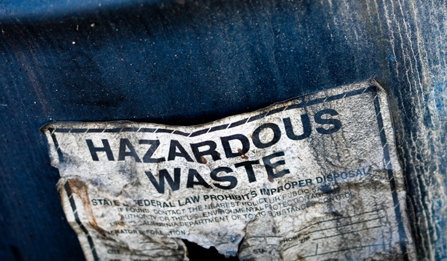Meth Addiction Now a Leading Cause of Drug-Related Death

As fatal methamphetamine overdoses continue to climb year over year, meth addiction has quickly risen to be one of the most dangerous drug problems in America.
What Is Methamphetamine?
Methamphetamine, or “meth,” is a potent, highly addictive stimulant drug that impinges on the user’s central nervous system. The drug looks like a white, odorless, bitter-tasting powder or a clear or blued, glass-like crystal. Methamphetamine use causes increased activity and talkativeness, decreased appetite, and a pleasurable sense of well-being or euphoria, often accompanied by a rush of energy.

Meth is chemically very similar to amphetamine, which is used in medical settings. However, unlike amphetamine, meth passes into the brain far easier, making it a more potent stimulant whose effects last longer and are far more harmful to the central nervous system.
The Effects of Using Meth
No matter how it is consumed, meth causes unwanted and harmful side effects in users, including short and long-term memory loss, aggression, psychotic and deranged behavior, severe damage to the cardiovascular system, acute malnutrition, and severe dental problems, including a condition called “meth mouth.” People who use meth are also at increased risk of contracting infectious diseases, such as hepatitis and HIV/AIDS. When used over time, meth can have serious neurological effects, leading to some health conditions that users may never recover from, even after they stop using meth.
Methamphetamine Use Is on the Rise
The National Institute on Drug Abuse (NIDA) has carefully analyzed meth usage trends, reporting that more people use the drug each year than the last year, and more people become addicted to it. According to NIDA, about 16.8 million Americans have used meth at least once in their lives, and about 2.5 million Americans use the drug at least once per year.
Of particular concern, more young people are showing interest in meth, as evidenced by survey results of high school teens. In 2022, about 0.2% of 8th graders, 0.3% of 10th graders, and 0.5% of 12th graders reported using methamphetamine.
According to NIDA, about 1.6 million people in the U.S. meet the criteria for meth addiction (0.6% of the population over the age of 12). This group is at the highest risk for an overdose, though anyone can overdose on the drug, including someone using it for the first time.
Meth Overdose Deaths Soared from 2015 through 2021
According to NIDA, overdose deaths involving meth have skyrocketed in recent years. From 1999 through 2011, between 500 and 1,000 people died from meth overdoses each year. In 2015, overdoses spiked to 5,716. In 2020, 23,837 people died from meth. In 2021, 32,537 people died from meth overdoses.
How did 32 times as many people die from meth in 2021 as in 2011? The NIDA researchers showed the contrast between how many people died from meth overdoses that included opioids and how many people died from just meth. Up until 2019, slightly more Americans were dying from just meth than from meth mixed with opioids. That trend flipped in 2020, and today the number of Americans who die from using meth that’s been mixed with opioids (often without the user knowing) is more than double the number of Americans who die from using meth alone.

According to Pew research, the 32x rise in meth-related deaths is not solely due to drug dealers increasingly mixing opioids into meth to create a more potent, addictive, and dangerous drug. While that emerging trend is a factor, Pew researchers also showed how the increase in meth-related deaths is partially the result of significantly more people using meth.
The researchers arrived at that conclusion by compiling and analyzing meth-related arrests. From 2015 to 2019, arrests for meth possession soared 59%. During the same time, Pew research surveys showed the number of people in the U.S. with a methamphetamine addiction jumped 37%.
“... Meaningful reductions in drug possession arrests and drug-related deaths may not be achieved without shifting to a public health response that prioritizes evidence-based approaches to treatment.”
The Pew researchers concluded their report by highlighting the dire need for effective meth addiction treatment. According to the report, despite a heightened police response to meth dealing and trafficking, all metrics used to measure meth addiction and prevalence are still trending upwards. Quoting the researchers’ conclusion, “The general response to these trends highlights a reliance on the criminal legal system that has often proved costly and ineffective. Meaningful reductions in drug possession arrests and drug-related deaths may not be achieved without shifting to a public health response that prioritizes evidence-based approaches to treatment.”
The Need for Treatment
There have always been overdose deaths from meth use, but overdoses remained mostly constant through the 1990s and 2000s. Recent years have seen a dramatic shift in such deaths, however, with more than 32,000 Americans now dying from meth overdoses each year.
Meth addiction is a lethal crisis and should be treated as such. If you know someone who is using meth, please help them find and enter a qualified drug addiction treatment center as soon as possible. Please don’t wait until it is too late.
Sources:
- NIDA. “What is methamphetamine?” National Institute on Drug Abuse, 2019. nida.nih.gov
- NIDA. “Methamphetamine Research Report: Overview.” National Institute on Drug Abuse, 2019. nida.nih.gov
- NIDA. “What is the scope of methamphetamine use in the United States?” National Institute on Drug Abuse, 2019. nida.nih.gov
- NIDA. “Drug Overdose Death Rates.” National Institute on Drug Abuse, 2023. nida.nih.gov
- Pew. “Methamphetamine Use, Overdose Deaths, and Arrests Soared From 2015 to 2019.” Pew Research Trusts, 2022. pewtrusts.org
 ®
®